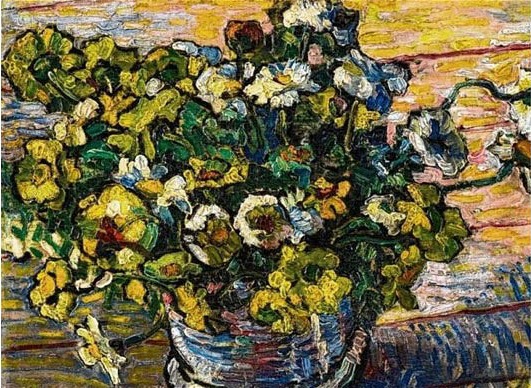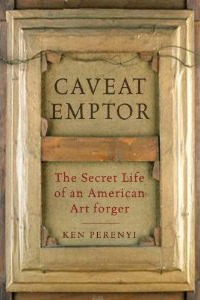 Don’t laugh if it is, and least not if we’re talking about Still Life with Peonies, a painting (left) that looks something like a van Gogh, but… no one is sure. Â
Don’t laugh if it is, and least not if we’re talking about Still Life with Peonies, a painting (left) that looks something like a van Gogh, but… no one is sure. Â
Now, using technology that analyzes DNA, a conservator named Ester Monnik plans to assess a three-inch strand of red hair that she extracted from the painting, drawn from deep in the paint (!). She’ll compare it with DNA taken from van Gogh’s descendants.
All this is at the behest of Markus Roubrocks, a resident of Cologne, who is said to be a multi-millionaire art collector. He says he inherited the painting from his father, and that it was found in Belgium in 1977 — “in an attic,” according to the Daily Telegraph. Roubrocks has shown the work before, getting validation from two “independent” art experts but a nay from the van Gogh Museum in Amsterdam, which the article says believes “the brush strokes are inconsistent with Van Gogh’s style, and therefore the painting is nothing more than an expert piece of forgery.”
 I have not a clue as to whether or not this painting is real. It certainly has a crazy backstory, but so have other real paintings. I’m more interested in the techology and its implications. While developments like this suggest that we might solve more art-world mysteries in the future, they may also bring forward a lot of fancy fakes. Technology can make copying easier.
I have not a clue as to whether or not this painting is real. It certainly has a crazy backstory, but so have other real paintings. I’m more interested in the techology and its implications. While developments like this suggest that we might solve more art-world mysteries in the future, they may also bring forward a lot of fancy fakes. Technology can make copying easier.
And, to hear some stories, it’s not that difficult now. Last weekend, the Wall Street Journal published a review of Caveat Emptor: The Secret Life of An American Art Forger by Ken Perenyi. Perenyi — for three decades — “duped auction houses, dealers and collectors in the United States and Britain with hundreds of forged paintings by his own hand, ranging from pseudo 17th-century Dutch landscapes to watercolors mimicking those of Alexander Calder,” Jonathan Lopez wrote in his review. “…anybody with the slightest interest in painting or deception will find “Caveat Emptor” an engrossing read. ”
Lopez ought to know. He wrote The Man Who Made Vermeers, a biography of the art forger Han van Meegeren.
As it happens, the BBC is about to start a new series called “Fake or Fortune” in September, according to Art Fix Daily. In three episodes, Philip Mould uses forensic evidence to examine “paintings that may or may not be by Degas, Turner and Van Dyck.” Perhaps PBS will once again lean on the better art offerings of the BBC and bring the series here.
